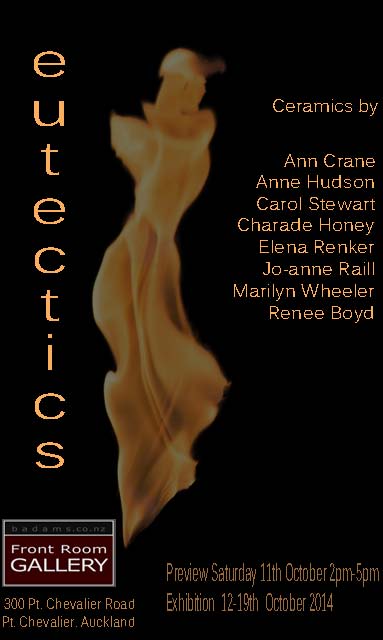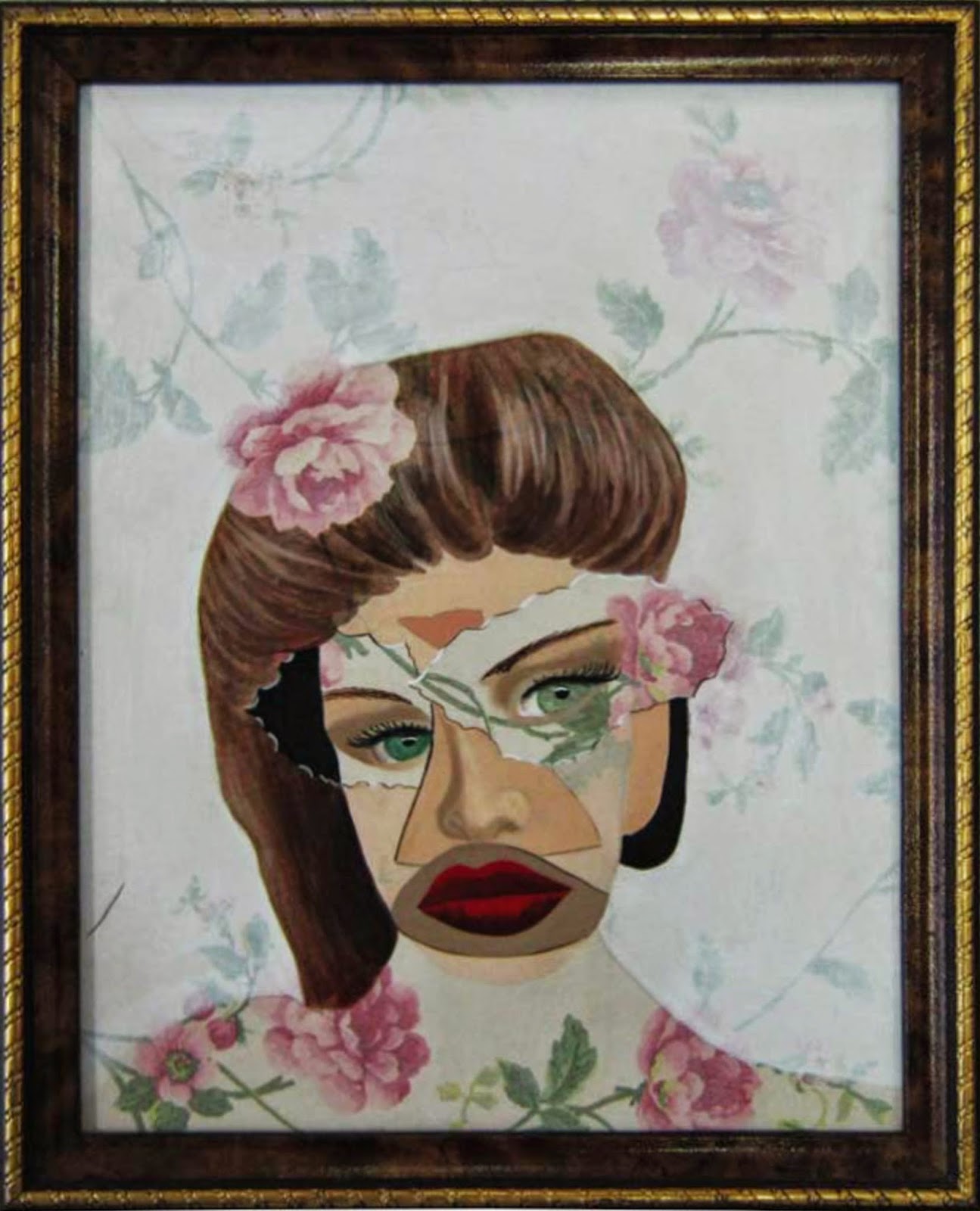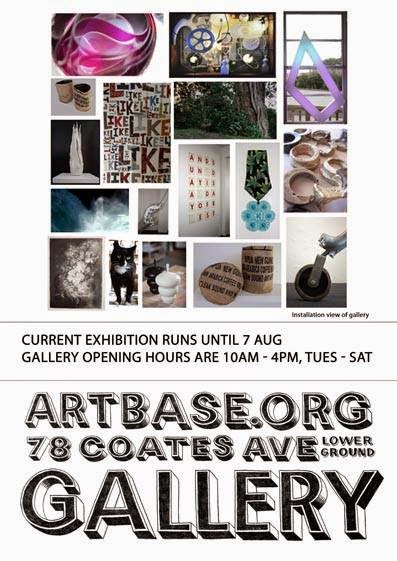 |
| Jo's Kiln Room |
Our most
recent Left-Field member, Jo-Anne Raill, is a ceramic artist with multiple
awards to her name as well as selective
exhibitions including the renowned Portage Awards. Practicing for over 20 years
Jo was represented by Sanderson Gallery in Newmarket where she is known for her quirky tiered cake plates. This
is a great place to start looking at Jo’s work but recently I was lucky enough
to visit her home studio where I experienced a fantastic introduction to her new
work, practice and philosophies.
I arrive at Jo’s to find her
sitting in her glasshouse like studio situated at the end of her mother’s house
looking out over the valley. Her kiln
is conveniently positioned in a charming cavity under her own adjacent home. Jo
refers to her house as being like a student flat and happily points out her miniature
tile collection that she is instinctively adding to in her kitchen.

Jo’s
dedication to her practice is apparent by the abundance of work in and around
her studio. She tells me that some
nights it’s just a quick toasted sandwich for tea as she struggles to pull
herself away when her husband, Micheal
comes home from work. The amount of creativity shared in the Raill household
becomes obvious as Jo unveils her son’s
fabulously large paintings. She tells me about her brother
photographing her work and her desire to someday collaborate with her poet daughter
and fore mentioned son, who is just finishing an arts degree at Unitech. I
instantly see a relationship between Jo’s objects and her son’s work and she
expresses bewilderment as to how this has come about. Family is obviously important
to Jo and she doesn’t work in the studio over the weekends, stating that this is
family time; when all her children come
home.
 |
| Jo with Fergus and Keiko |
Set
in 5 acres of lushness at the beginning of the Hunua Gorge, Jo expresses how unfortunately
a busy life style had left her garden neglected but now she is finally enjoying
planting out raspberries, olive and almond trees, relocating her vegetable patches
and bringing an existing orchard back to its former glory. This is all in an
effort to grow all their own food and
give food to others. Through reinstating her horticulture background and creating
this edible forest, Jo is balancing her inside studio life with her ‘greenie’ nature. Having been on the property since their early 20’s, Jo and Micheal relish
its position in the country while still having the convenience of being within
easy reach of the city. Although Jo
started out life as a horticulturalist, she acknowledges that creativity has
had a stronghold on her life and is elated that the two are finally merging.
Jo’s artistic
path started about 20 years ago with painting
but as she found herself ‘just sticking things on the canvas’ while simultaneously
becoming annoyed with the illusion of paint, she decided to create objects. She
was then introduced to ceramics while at Teachers Training College and it set
in as a hobby for the next 10 years while raising her children and teaching in
a Manurewa Primary School. She then went on to do a four year, part time, Diploma in Ceramics, where clay started to
take over her life. Jo later went on to be
a manager at Auckland Studio Potters (ASP) before going on to teach at Unitech. Jo acknowledges that while lecturing at Unitech as a ceramics (studio practice)
tutor, she learnt a lot about herself
through ‘osmosis: by doing it’. She then later took over supervising the diploma
course at ASP while teaching night classes at Selwyn College.
 |
| ‘Library of Neglected and Unfinished Things’ |
The
merging of Jo’s creativity and green fingers has brought about a wee garden of
ceramics outside her studio that she calls her ‘Library of Neglected and Unfinished
Things’, while inside, she is starting a new series of ‘wall works’ based on a domestic
kitchen scene. Her last wall work series,
the Architect, consists of about ten pieces and was inspired from a
previous work, ironically now situated in the ‘Library of Neglected and Unfinished
Things’. Here she explains how she was interested in making a ceramic painting
with different corners and secret areas and although she felt it failed
technically and that it wasn’t communicating her idea, she enjoyed the ‘see
through’ layering. Obviously, paint hasn’t completely slipped from Jo’s practice as her glazes are skilfully
applied and her objects, when clustered, are extremely reminiscent of
the surrealist painters, especially Miro. Jo articulates, “I always wanted to
paint on work, I don’t even like making mugs,
I just like it when you get a surface to
paint on and then my work got ridiculously big, it just kept getting bigger and
bigger coz I wanted to paint on things and then I thought why don’t I just get
a canvas and then from there I thought why don’t you just take the subject
matter out of the painting like the main characters and make them instead of
trying to paint on work because it is a 3 dimensional thing and you, well
there’s got to be a reason, why are you painting on them all the time, why
don’t you make it? And that’s how I got to making wall works”. After being
stuck between 2D and 3D Jo is really pleased with this outcome as it is a
combination of the two. Jo explains “If
you’re making a 3d object you’ve got to think all the way round it so with
these I can think in a more painterly way”.

On
the table Jo has some sketches that she drew when she woke recently throughout the night and observed the moon shining,
making weird/strange shapes everywhere. They parallel with the abstract and fantastic
looseness going on in her work and she explains how there is not a lot of
abstract ceramics going on in NZ but there is internationally and feels New
Zealand ceramics is still quite
conservative. Jo sees people just buying ceramics for their home décor and
believes that “whether you sell work or not doesn’t mean to say that what you’re
making is not good, it’s probably the opposite. It’s probably really good work
but people just don’t understand it”. Jo says she appreciates being able to make for the
sake of making and this in turn allows her to experiment, be individual and uninhibited
by what other people want or expect. She say’s “It’s important to just be able
to concentrate on what you really want to make”.

You can keep
an eye out for Jo via Art Week, she has
donated some mugs for ASP’s ‘the Great Mugging’.
S Walker-Holt Sept 2014








































+1+to+15.jpg)










